Today I treated myself to a new Primus:
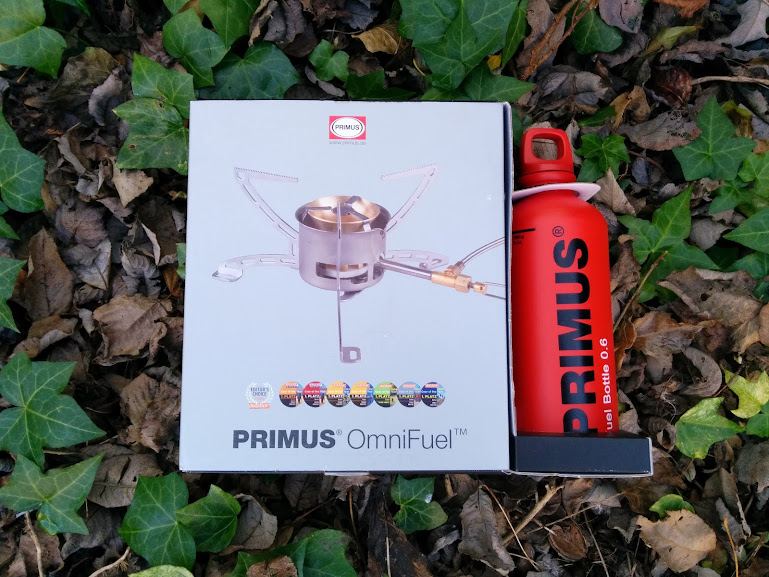
So I took it straight out into the garden to unbox it and fire it up.
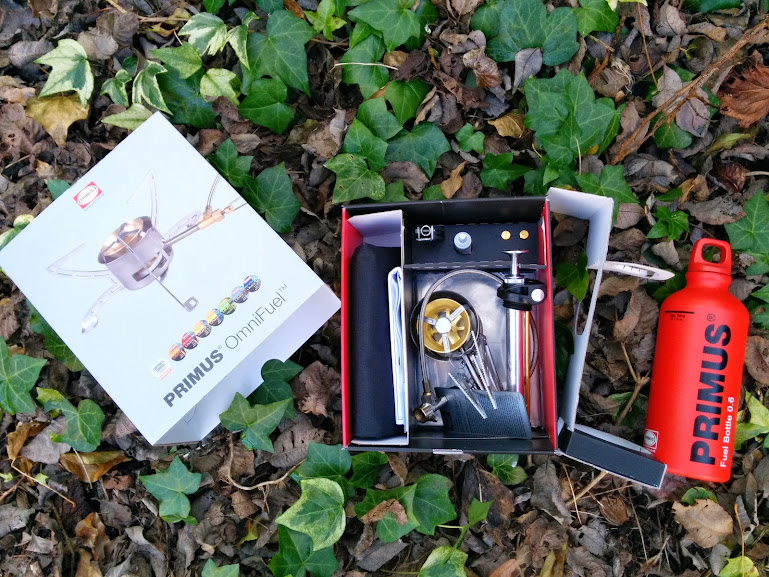
This is the tool, a tube of goop for lubing the pump and two extra jets of different sizes:

The instructions:
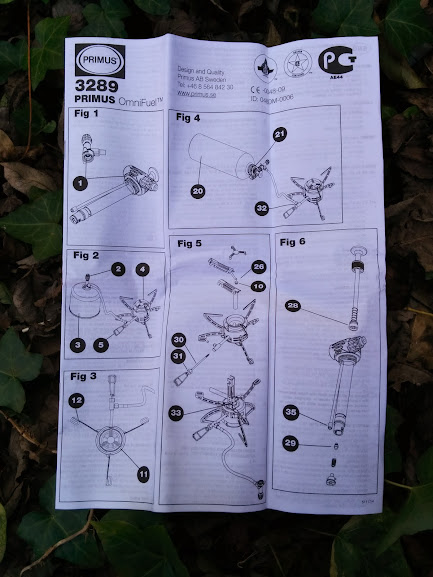
The pump barrel and fuel pickup tube are slanted in the screw-in assembly so that it ends up against one side of the fuel bottle:
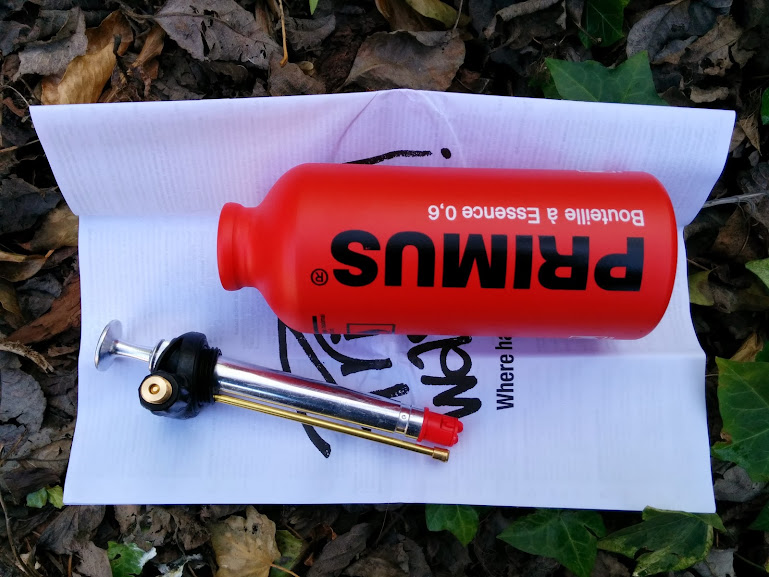
The component parts all ready to go. I filled the bottle about half way with paraffin.

They seem to want you to leave this label on the fuel line connector. I cant see it staying on mine for very long. This connector also fits screw-in butane cannisters, although why you would choose such an expensive piece of kit to burn butane is beyond me.

It comes with the largest jet fitted, this is for butane. There are two other jets, a medium one for petrol/white gas/coleman fuel/Aspen 4T/Panel wipe and a small one for God's own fuel, paraffin. The three-legged flame plate flips up around a split ring to give access to the jet at the bottom of the burner bell:

The Primus tool has a socket spanner for the jets:
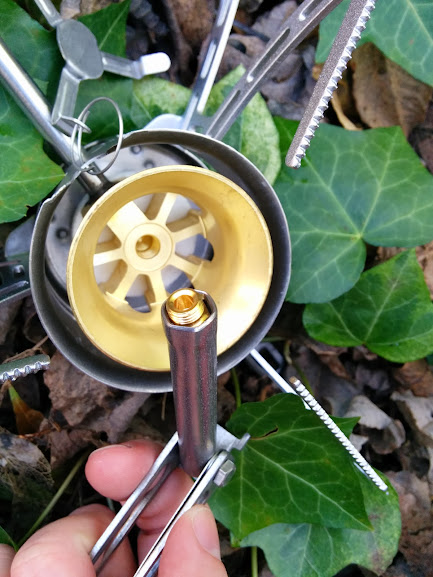
With the smallest jet installed I pumped up the fuel bottle fifty times and connected it to the fuel hose. While screwing it into place here was about a seconds worth of hissing that resulted in paraffin all over my fingers. This was a bit of a disappointment, but I have an MSR XGK and an Optimus Nova+ that are messy too. I dont think anyone has completely cracked this problem. Top tip: alcohol hand sterilizer gets rid of stinky paraffin from the hands very easily.

I gave it a generous splash of meths from the Trangia bottle and lit it off with a firesteel. I used a Light My Fire to keep a Swedish theme.

The ground cover didnt appreciate these combustatory shenannigans so I fished out a scrap of plywood while the stove preheated. The the brass burner bell heated up to a temperature that will vapourize paraffin. When I opened the fuel valve at the connector and the control spindle at the burner, paraffin vapour shot out from the jet and it roared into life!
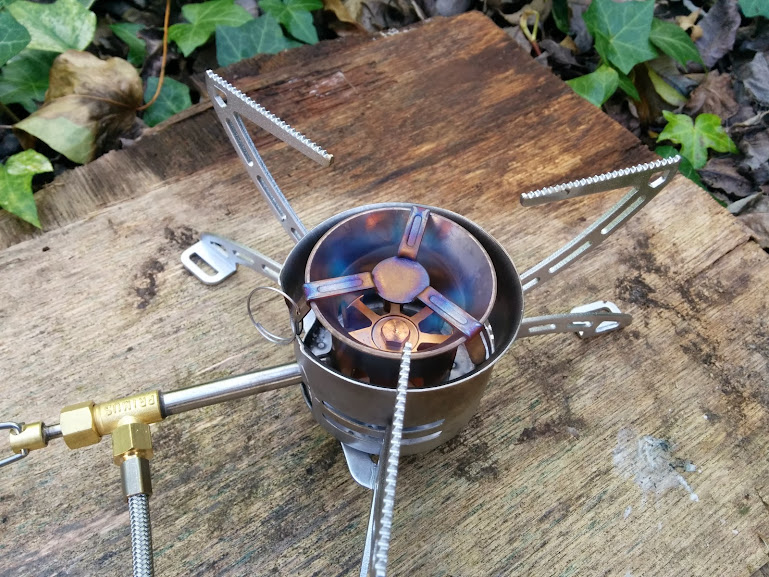
Some sausages went on in a stainless GI style mess tin:
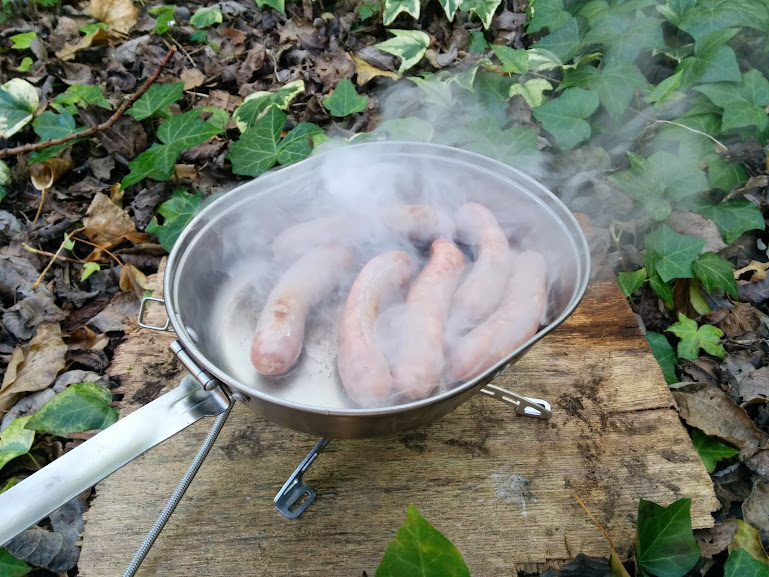
The stove ran extremely hot. I would probably only use twenty or thirty pumps next time because I had to turn the control spindle right down to avoid charring my bangers. I turned it off accidentally, but one strike of the firesteel solved that. The combination of high heat and a thin stainless pan meant I had to keep things moving constantly. With less pressure in the bottle there would be less pressure on the chef too.
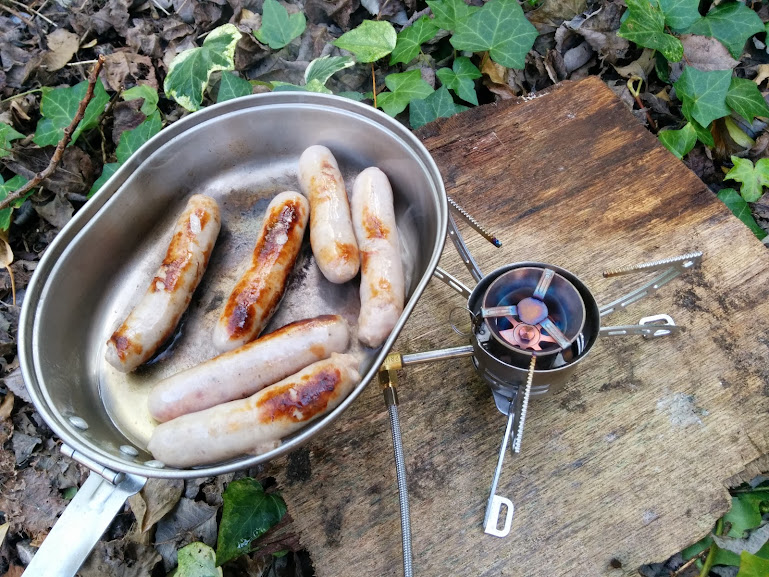
To turn it off you flip the bottle over. The connectors are freely rotating to allow this and the pump assembly is labelled 'ON' and 'OFF' on each side. In the ON position, the slanted fuel pickup tube is at the bottom of the bottle, and pick up fuel. When you flip it over to OFF, the fuel pickup is now in the air space at the top of the bottle and so air enters the fuel line. The stove continues to run for about a minute while air replaces fuel in the fuel hose. When there is no more fuel in the hose, the stove stops suddenly. There is a bit of airport style hot kerosene pong after this as the air pressure in the bottle blows out through the hot burner, so it is best to move your food away before the burner stops.

After all this there is no fuel in the burner and no air pressure in the bottle so you can close the valves, take it apart and pack it away. It all goes into a tough nylon multi-compartmented bag. You could easily fit a small meths bottle, a firesteel, a rag and other small bits of relevant kit in there as well. The 500ml Trangia bottle should give you an idea of the size.
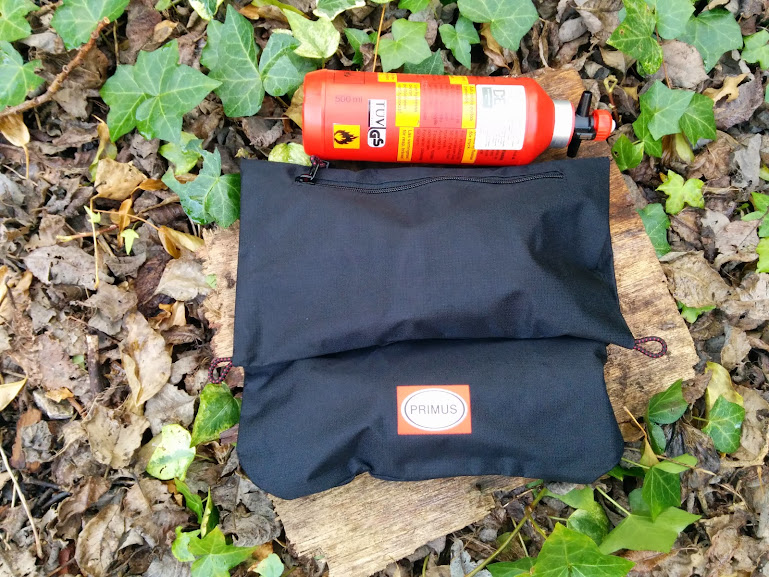
I am very pleased with the Primus Omnifuel. The quality and performance are first class and it is a worthy addition to my collection of classic and modern camp stoves.

So I took it straight out into the garden to unbox it and fire it up.

This is the tool, a tube of goop for lubing the pump and two extra jets of different sizes:

The instructions:

The pump barrel and fuel pickup tube are slanted in the screw-in assembly so that it ends up against one side of the fuel bottle:

The component parts all ready to go. I filled the bottle about half way with paraffin.

They seem to want you to leave this label on the fuel line connector. I cant see it staying on mine for very long. This connector also fits screw-in butane cannisters, although why you would choose such an expensive piece of kit to burn butane is beyond me.

It comes with the largest jet fitted, this is for butane. There are two other jets, a medium one for petrol/white gas/coleman fuel/Aspen 4T/Panel wipe and a small one for God's own fuel, paraffin. The three-legged flame plate flips up around a split ring to give access to the jet at the bottom of the burner bell:

The Primus tool has a socket spanner for the jets:

With the smallest jet installed I pumped up the fuel bottle fifty times and connected it to the fuel hose. While screwing it into place here was about a seconds worth of hissing that resulted in paraffin all over my fingers. This was a bit of a disappointment, but I have an MSR XGK and an Optimus Nova+ that are messy too. I dont think anyone has completely cracked this problem. Top tip: alcohol hand sterilizer gets rid of stinky paraffin from the hands very easily.

I gave it a generous splash of meths from the Trangia bottle and lit it off with a firesteel. I used a Light My Fire to keep a Swedish theme.

The ground cover didnt appreciate these combustatory shenannigans so I fished out a scrap of plywood while the stove preheated. The the brass burner bell heated up to a temperature that will vapourize paraffin. When I opened the fuel valve at the connector and the control spindle at the burner, paraffin vapour shot out from the jet and it roared into life!

Some sausages went on in a stainless GI style mess tin:

The stove ran extremely hot. I would probably only use twenty or thirty pumps next time because I had to turn the control spindle right down to avoid charring my bangers. I turned it off accidentally, but one strike of the firesteel solved that. The combination of high heat and a thin stainless pan meant I had to keep things moving constantly. With less pressure in the bottle there would be less pressure on the chef too.

To turn it off you flip the bottle over. The connectors are freely rotating to allow this and the pump assembly is labelled 'ON' and 'OFF' on each side. In the ON position, the slanted fuel pickup tube is at the bottom of the bottle, and pick up fuel. When you flip it over to OFF, the fuel pickup is now in the air space at the top of the bottle and so air enters the fuel line. The stove continues to run for about a minute while air replaces fuel in the fuel hose. When there is no more fuel in the hose, the stove stops suddenly. There is a bit of airport style hot kerosene pong after this as the air pressure in the bottle blows out through the hot burner, so it is best to move your food away before the burner stops.

After all this there is no fuel in the burner and no air pressure in the bottle so you can close the valves, take it apart and pack it away. It all goes into a tough nylon multi-compartmented bag. You could easily fit a small meths bottle, a firesteel, a rag and other small bits of relevant kit in there as well. The 500ml Trangia bottle should give you an idea of the size.

I am very pleased with the Primus Omnifuel. The quality and performance are first class and it is a worthy addition to my collection of classic and modern camp stoves.
